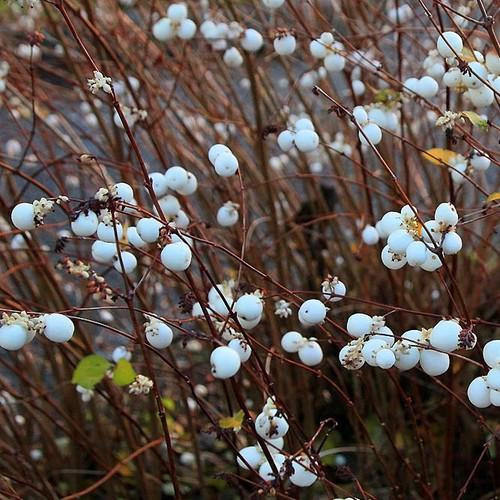Snowberry (Symphoricarpos albus) is a common deciduous shrub, growing 3-6’ in riparian, swamp, moist meadow and open forest habitats, from sea to middle elevations. What makes it so lovely at this time of year is that it’s leafless stems are graced with clusters of bright white berries that sharply stand out against the winter landscape.
Snowberry is in the Honeysuckle family, and just like Honeysuckle berries, they are not edible to humans. The whole plant is toxic to humans, although records show that Native Americans have used the berries medicinally for a variety of purposes, and the stems for arrow shafts.
The berries have a mild saponin content, which produces foam when mixed with water. The whole plant is excellent grazing for wild and domestic animals, and birds enjoy the berries and cover that the shrubs provide. Birds also disperse the seeds widely, although the plant’s main reproductive method is to sprout new shoots from its spreading rhizome. As a result, you can often see it growing in quite substantial thickets, which provide great cover for small mammals.
If you are looking to replant a disturbed or eroded site, Snowberry is a great choice due it’s relatively fast growth and rhizomatous spreading. It grows in full sun, but tends to prefer some shade, and well-drained soil.
Written by Lilia Letsch, Rogue Native Plant Partnership

